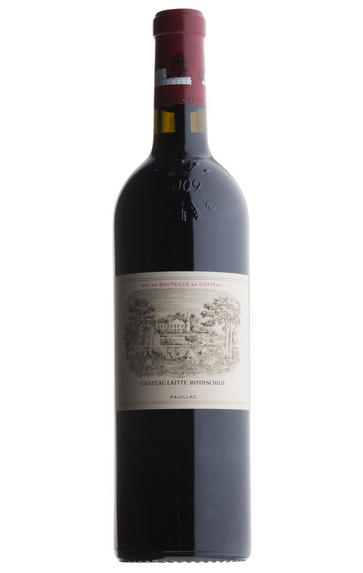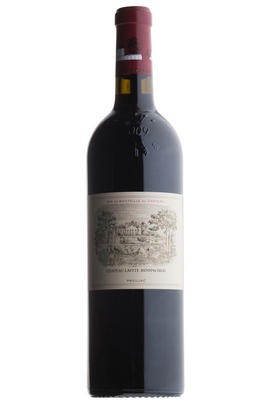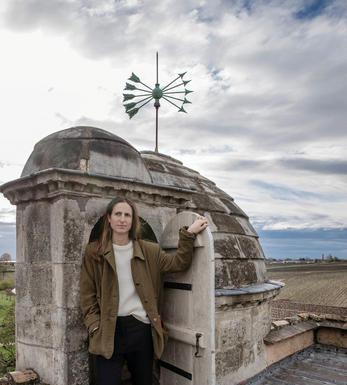
2006 Château Lafite Rothschild, Pauillac, Bordeaux

Critics reviews
Tasted blind. Very rich and lively and gamey. Thick and solid. Set for the long term. Tough tannins on the end but admirably fresh.
Drink 2019 - 2035
Jancis Robinson MW, JancisRobinson.com (May 2016)
Tasted at Bordeaux Index's annual 10-Year On tasting in London and then blind at Farr Vintners tasting. The 2006 Château Lafite-Rothschild offers impressive fruit intensity on the nose, although it does not have the precision of the 2006 Mouton-Rothschild. Red berry fruits intermingle with rose petals and sous-bois scents - a very typical Lafite bouquet where less can be more.
The palate is medium-bodied with fine tannin and a keen line of acidity. It is certainly very well balanced with graphite-tinged black fruit, but whereas Mouton-Rothschild possesses that peacock's tail, Lafite remains linear. Nevertheless, the sophistication really comes through here. It is a Lafite-Rothschild that may spring a few surprises down the line, one of those wines that keeps drawing you back. Understated class.
Drink 2018 - 2045
Neil Martin, Wine Advocate (May 2016)
The aromas of blue fruit, iodine, sweet tobacco and lavender follow through nicely to the palate that’s medium-bodied with fine, firm tannins and a long, cool finish. Still a little tight, but it shows great finesse and pedigree. Just starting to open now.
James Suckling, JamesSuckling.com (July 2021)
One of the fabulous surprises, although I had suggested last year that it could jump in quality, of my tastings, the 2006 Lafite Rothschild is a great, great wine made from a blend of 82% Cabernet Sauvignon, 16% Merlot, and 2% Petit Verdot. When I tasted it from barrel, it reminded me of their successful 1988, but it is dramatically superior to that vintage. Frankly, it may turn out to be as good as the 2005, which in all of Bordeaux is a far greater vintage than 2006.
Lafite’s severe selection process (42% made it into the grand vin) resulted in a full-bodied wine boasting an extraordinary perfume of charcoal, truffles, lead pencil shavings, and sensationally sweet, ripe black currant and cedar notes. A wine of extraordinary intensity, texture, and depth with silky tannins as well as awesome concentration, this has turned out to be a remarkable Lafite Rothschild that should be drinkable much earlier than the 2005, but age for three decades.
Drink 2014 - 2035+
Robert M. Parker, Jr., Wine Advocate (February 2009)
Such a rich (but keeping-it-elegant) Lafite nose. Great restraint and power here: Lafite always knows when to advance and when to retreat. This displays juicy cassis and cold ash, with perfectly worn tannins that are just starting to soften but have so much ahead. It should maintain this level for another 30 years whilst moving into its second, third and fourth life along the way.
Drink 2018 - 2040
Jane Anson, Decanter.com
Good full ruby-red. Very ripe aromas of cassis, graphite and cedar chips, lifted by peppery and floral high notes. Densely packed and superconcentrated but light on its feet, with compelling flavors of spicy berries and minerals. The very long, slow-building finish stains the palate with flavor. Very backward but not austere; and unlike some recent vintages of Lafite, which could appear deceptively light in the early going, this showcases its density and ripeness from the outset. I have the impression that most of the less-ripe fruit was declassified into the far lighter Carruades de Lafite (87), which shows a distinctly cool style for the year.
Stephen Tanzer, Vinous.com (May 2009)
About this WINE

Château Lafite Rothschild
The iconic Château Lafite Rothschild was classified as a first growth in 1855 and has been in the Rothschild family since 1868. Today, Lafite is headed up by Saskia de Rothschild, daughter of long-time steward Baron Eric de Rothschild.
Château Lafite Rothschild is an iconic first-growth property in the Pauillac appellation of Bordeaux, France. It achieved its top-tier rank in 1855 and has been in the Rothschild family since 1868. Today, Lafite is headed up by Saskia de Rothschild, daughter of long-time steward Baron Eric de Rothschild.
The property is located at the northern tip of Pauillac, separated by St Estèphe by marshland and the Jalle de Breuil stream. Two areas of the vineyard are particularly notable: the gravel plateau, which is the heart of the grand vin; and the Plateau de Carruades, from which Lafite’s second wine takes its name. The vineyard is planted mostly to Cabernet Sauvignon (70%), along with Merlot (25%), Cabernet Franc (3%) and Petit Verdot (2%).
A new cellar was completed here in time for the 2011 harvest, with a combination of stainless steel and concrete tanks, of varying sizes. The barrels come from Lafite’s own cooperage, located not far from the property.
In addition to its 110 hectares of vines, the estate has 300 hectares of woods and marshes. The team consider this to be an integral part of the ecosystem.

Pauillac
Pauillac is the aristocrat of the Médoc boasting boasting 75 percent of the region’s First Growths and with Grand Cru Classés representing 84 percent of Pauillac's production.
For a small town, surrounded by so many familiar and regal names, Pauillac imparts a slightly seedy impression. There are no grand hotels or restaurants – with the honourable exception of the establishments owned by Jean-Michel Cazes – rather a small port and yacht harbour, and a dominant petrochemical plant.
Yet outside the town, , there is arguably the greatest concentration of fabulous vineyards throughout all Bordeaux, including three of the five First Growths. Bordering St Estèphe to the north and St Julien to the south, Pauillac has fine, deep gravel soils with important iron and marl deposits, and a subtle, softly-rolling landscape, cut by a series of small streams running into the Gironde. The vineyards are located on two gravel-rich plateaux, one to the northwest of the town of Pauillac and the other to the south, with the vines reaching a greater depth than anywhere else in the Médoc.
Pauillac's first growths each have their own unique characteristics; Lafite Rothschild, tucked in the northern part of Pauillac on the St Estèphe border, produces Pauillac's most aromatically complex and subtly-flavoured wine. Mouton Rothschild's vineyards lie on a well-drained gravel ridge and - with its high percentage of Cabernet Sauvignon - can produce (in its best years) Pauillac's most decadently rich, fleshy and exotic wine.
Latour, arguably Bordeaux's most consistent First Growth, is located in southern Pauillac next to St Julien. Its soil is gravel-rich with superb drainage, and Latour's vines penetrate as far as five metres into the soil. It produces perhaps the most long-lived wines of the Médoc.
Recommended Châteaux
Ch. Lafite-Rothschild, Ch. Latour, Ch. Mouton-Rothschild, Ch. Pichon-Longueville Baron, Ch. Pichon Longueville Comtesse de Lalande, Ch. Lynch-Bages, Ch. Grand-Puy-Lacoste, Ch, Pontet-Canet, Les Forts de Latour, Ch. Haut-Batailley, Ch. Batailley, Ch. Haut-Bages Libéral.

Cabernet Sauvignon Blend
Cabernet Sauvignon lends itself particularly well in blends with Merlot. This is actually the archetypal Bordeaux blend, though in different proportions in the sub-regions and sometimes topped up with Cabernet Franc, Malbec, and Petit Verdot.
In the Médoc and Graves the percentage of Cabernet Sauvignon in the blend can range from 95% (Mouton-Rothschild) to as low as 40%. It is particularly suited to the dry, warm, free- draining, gravel-rich soils and is responsible for the redolent cassis characteristics as well as the depth of colour, tannic structure and pronounced acidity of Médoc wines. However 100% Cabernet Sauvignon wines can be slightly hollow-tasting in the middle palate and Merlot with its generous, fleshy fruit flavours acts as a perfect foil by filling in this cavity.
In St-Emilion and Pomerol, the blends are Merlot dominated as Cabernet Sauvignon can struggle to ripen there - when it is included, it adds structure and body to the wine. Sassicaia is the most famous Bordeaux blend in Italy and has spawned many imitations, whereby the blend is now firmly established in the New World and particularly in California and Australia.


Buying options
Add to wishlist
Description
There are few, if any, more beautiful wines in Bordeaux than Ch. Lafite. The ethereal finesse, the lacy tannins, the intense, pure fruit and feminine delicacy are all there in this lovely wine. It is beautifully silky with coffee, spice, cedar notes, and a long, sensual finish. Elegant, seductive and multi-dimensional, it has the firm tannins typical of the vintage and lovely harmony. With only 40% of the crop going into the Grand Vin, General Manager Charles Chevalier has done what he has to maintain the exceptional Lafite quality in 2006.
Berry Bros. & Rudd
wine at a glance
Delivery and quality guarantee